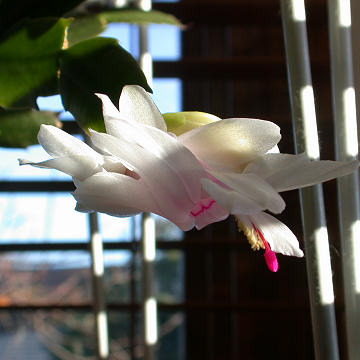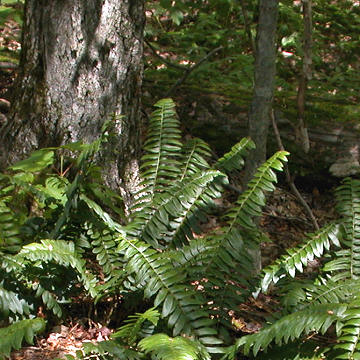With Christmas just a few days away I figured it would be a good time to discuss some of the plants often associated with the holiday. Besides trees, probably the one that most often comes to mind is the poinsettia (Euphorbia pulcherrima). The poinsettia is native to Mexico and South America. It is a member of the spurge family (Euphorbiaceae), many members of which produce milky latex sap and showy bracts (modified leaves) that surround one or more floral structures called cyanthia. A cyanthium is composed of a single female flower partially surrounded by a cup-like involucre topped by five simplified male flowers. In the poinsettia the cyanthia are yellow-green and the floral bracts resemble the leaves but are large and scarlet red.
A long-standing myth is that the poinsettia is poisonous due to the death of a 2 year old child in 1919 that was falsely attributed to ingestion of this plant. While the plant is not considered edible, the toxicity of the plant is quite low and at worst it may cause upset stomach or vomiting if eaten.
Another popular plant this time of year is the Christmas Cactus, which is actually represented by a few species mostly in the genus Schlumbergera. In the wild they are epiphytic cacti, growing on trees in forests of South America. What appear to be leaves are actually flattened stems. Sections of the stem root easily in a loose potting mix that includes a good proportion of sand. Flowering is triggered by short days and long nights, as is the case with poinsettia. While I don’t have any pictures of the latter, I did manage to find a few pictures of a Christmas Cactus in bloom.

Christmas Cactus

I will end this with a perhaps less commonly known plant associated with the holiday, and one that is native to Eastern North America. The Christmas Fern (Polystichum acrostichoides) is so named because it was once popular for use in Christmas decorations due to its tough, evergreen leaves that can be found throughout the year, even under snow. It grows on well-drained soils in rich, shady woodlands.

Christmas Fern